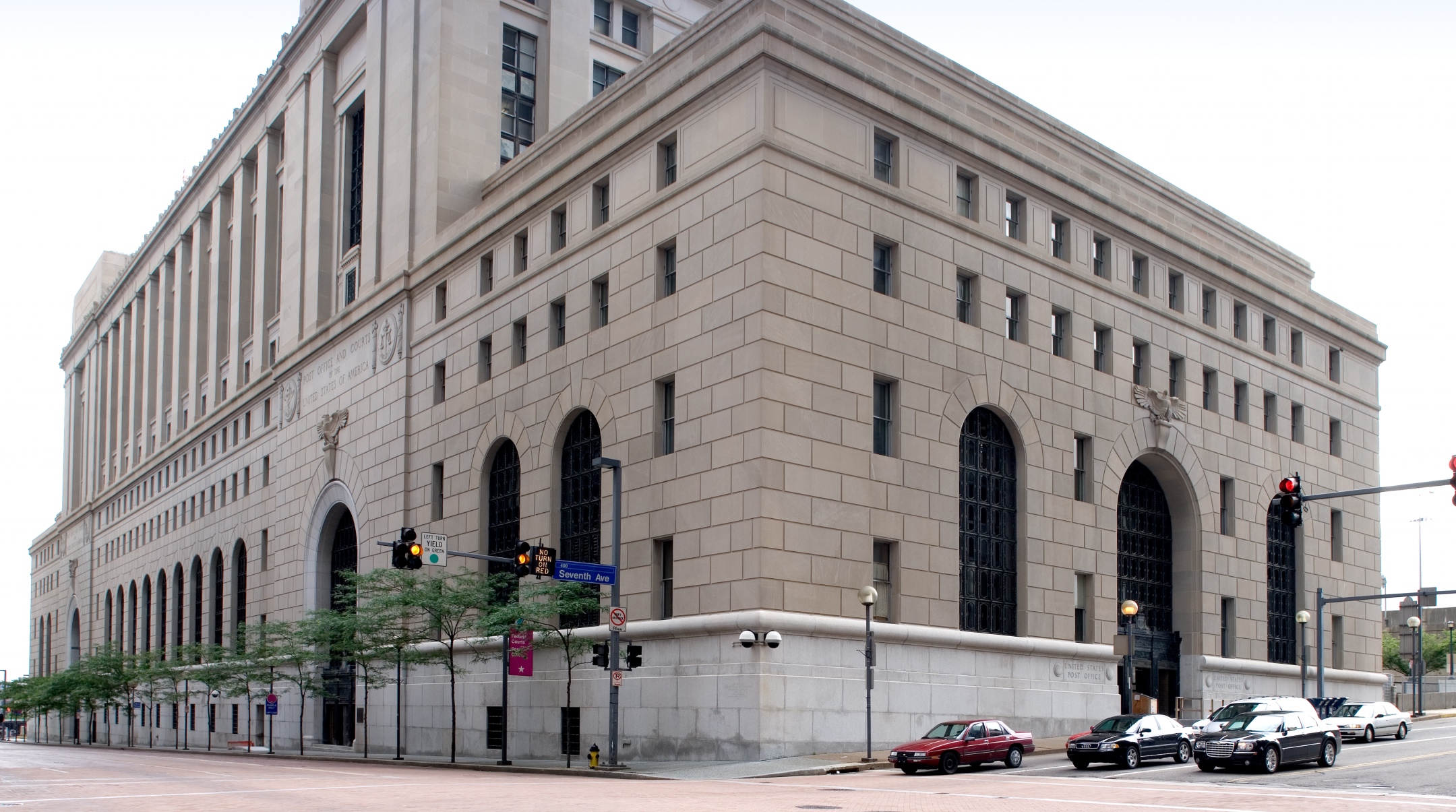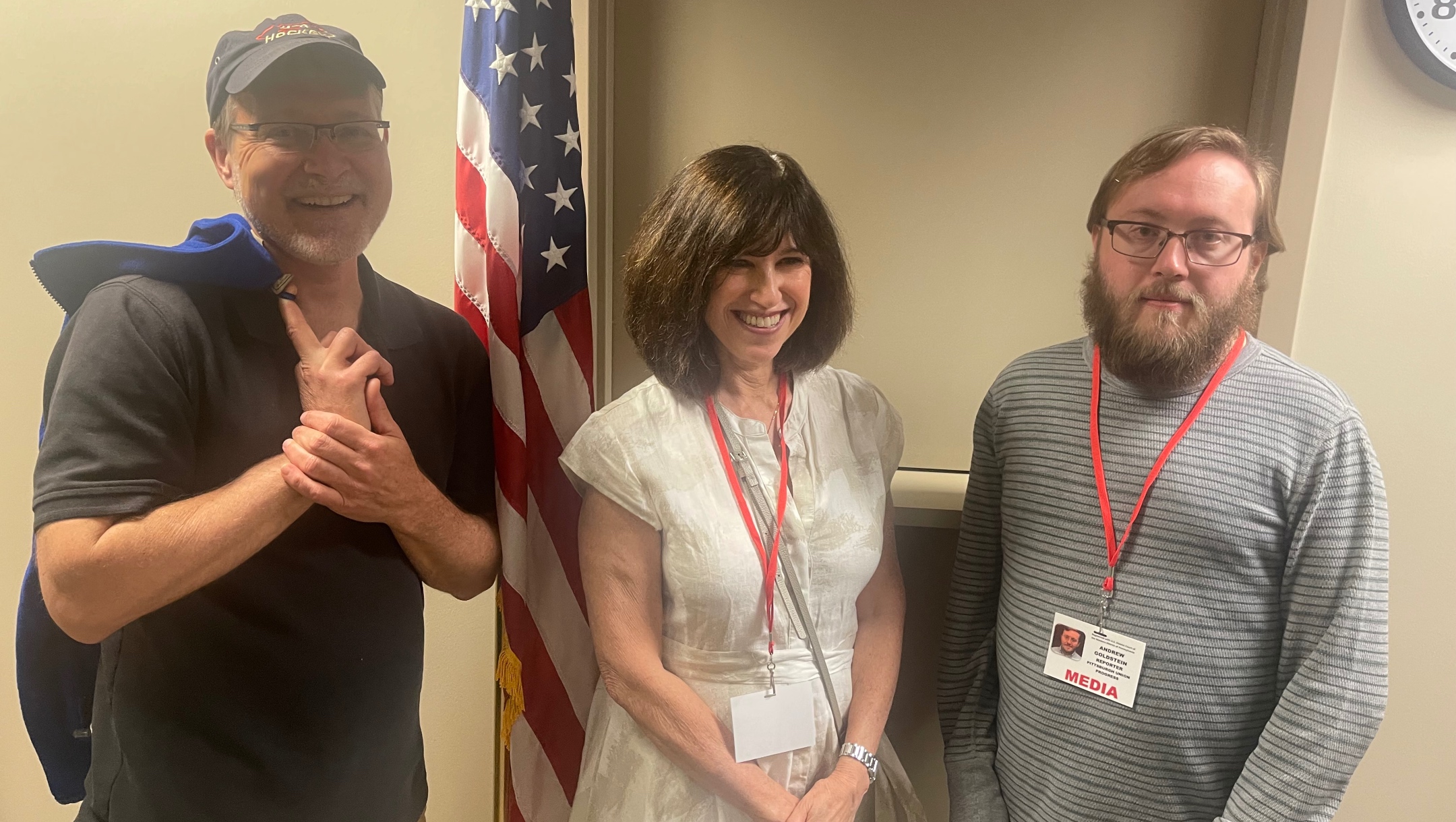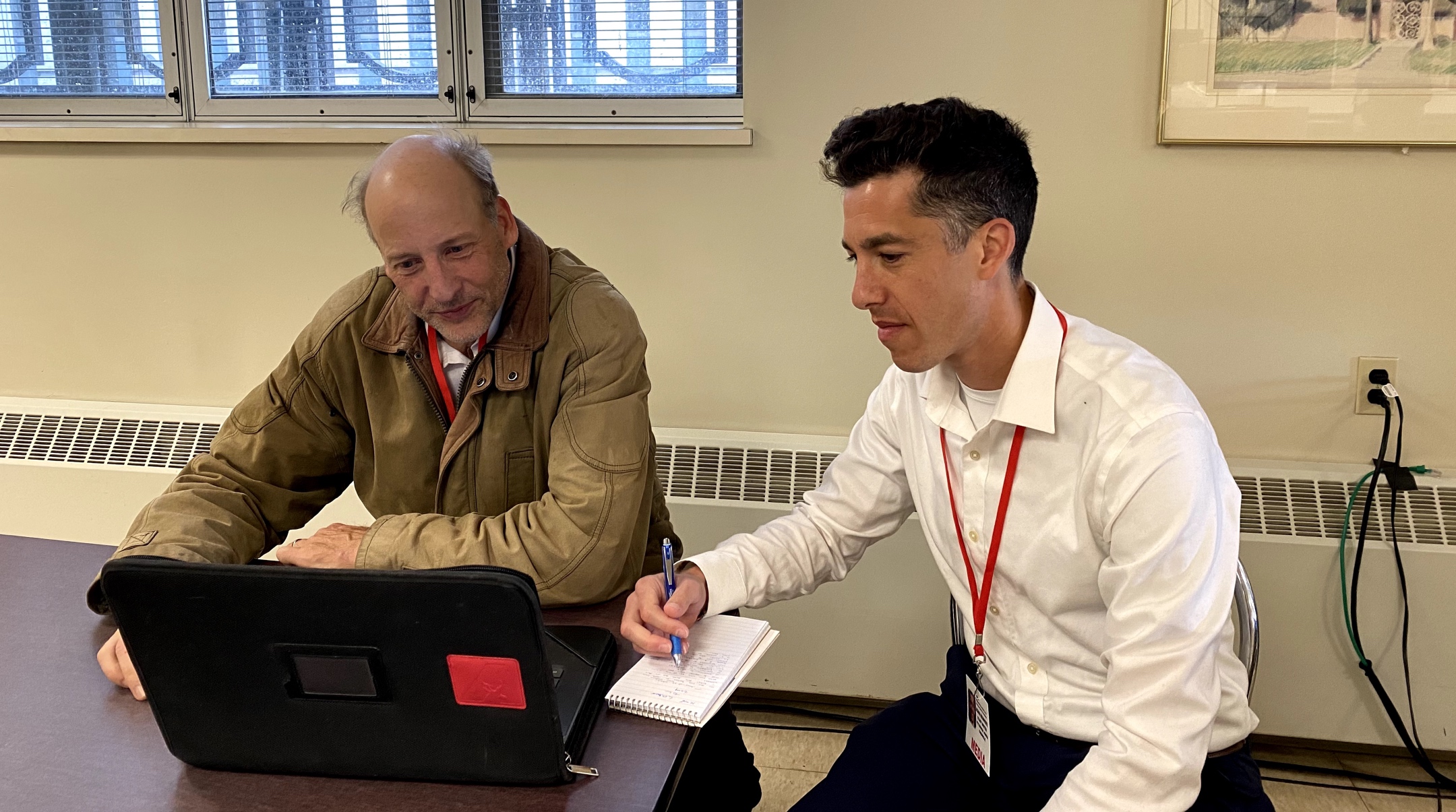In an unusual alliance, Jewish media and striking journalists are uniting to cover the Pittsburgh synagogue shooting trial
In covering the trial of the gunman accused in the Tree of life massacre, the Pittsburgh Jewish Chronicle brings the sensibilities of the Jewish community and the Pittsburgh Union Progress brings seasoned crime and court reporters

U.S. Courthouse and Post Office, Pittsburgh, Pennsylvania. Nov. 16, 2010. (Carol M. Highsmith/Buyenlarge/Getty Images)
PITTSBURGH (JTA) — How many times should an alleged synagogue shooter’s name be mentioned in a news story about his trial, now beginning after more than four years?
For the Pittsburgh Union Press last month, the answer was seven. For the Pittsburgh Jewish Chronicle, it was an uneasy five, in a departure from its usual answer of zero — a number chosen out of deference to a community devastated by the shooting.
The slight difference was the only discrepancy between one set of stories published by the two news organizations covering the trial of Robert Bowers, accused of murdering 11 Jews in their synagogue here in 2018.
The anomaly offers a window into an unusual partnership between the two publications — the city’s Jewish paper and the news site established by striking staffers for the Pittsburgh Post-Gazette — born in February when it became clear that the trial would last months.
Pittsburgh Jewish Chronicle editor Toby Tabachnick was dreading the trial coverage, with a staff of just three on the editorial side: herself and two reporters, David Rullo and Adam Reinherz.
“I started getting really nervous. Like, how are we going to do this?” Tabachnick said on the eve of the trial, speaking at the federal courthouse where jury selection would soon begin. “Our regular reporters could have been here. But it would have been extremely taxing, difficult and emotional for us, because we’re so ingrained in the community too.”
sPlus, she added, “In addition to this trial, which is going to be every day for three months, we’re covering the synagogues, events and the holidays, the lectures, we still have a regular community newspaper to put out.”
Tabachnick knew Andrew “Goldy” Goldstein, one of the Post-Gazette’s team that picked up a Pulitzer for their coverage of the massacre, from his time as a Pittsburgh Jewish Chronicle intern. She also knew he was on strike and wondered whether he could use the extra freelance opportunity.
Instead, Goldstein immediately offered up a better idea: Join with the Pittsburgh Union Progress, the strike paper, in a joint reporting project, organized in part through the Pittsburgh Media Partnership, an incubator for local journalism. (The Jewish Telegraphic Agency is raising funds for the coverage.)
Working together just made sense, Goldstein said. The Chronicle was deeply resourced and credible in the Jewish community, and the Progress had on board Torsten Ove, a local legend.

“We have the all-star federal courts reporter in Torsten and we have a lot of really great journalists who love Pittsburgh, love this community, and we’ll do our best to cover it,” Goldstein said, noting that the Chronicle would also have access to the Progress’s photographers. “But the Chronicle brings something different entirely to the table, which is, they’re so deeply sourced in the Pittsburgh Jewish community, and they have such an interest in this trial in particular.”
Newsroom collaborations have become more frequent in recent years as publications realize they can expand their impact and audience by working together. But while there are a growing number of relationships between local and national publications and between daily and investigative outlets, ties between mainstream newsrooms and community or ethnic media are less common.
S. Mitra Kalita, the founder and director of URL Media, a network of Black and Brown community news outlets that share content and revenue, said the value in such partnerships was not just in delivering relief as media staffs shrink, but also in sensitizing mainstream media to minority sensibilities.
“Talking about who [the ethnic media outlet is] serving and why we’re doing it this way — the spirit of real collaboration is a bit of that give and take,” she said. “We make mainstream media way better because it starts to infuse mainstream media with aspects of community and thus redefine the mainstream.”
The residual trauma of the massacre in the Pittsburgh collaboration made it all the more important for the mainstream reporters to be sensitive to the nuances that the Jewish media was bringing, she said.
“Especially a story like this one, which was such an attack on a community — a community that was singled out for their sheer existence, the strategy cannot be ‘let’s just work in parallel,” Kalita said. “It’s not going to work. It has to be kind of a cross-pollination and a real collaboration.”
That’s exactly what is happening, according to the reporters and editors involved in the project, with communication easy between each publication’s editor and expertise flowing in both directions.
Ove a denizen of the Joseph F. Weis Jr. Courthouse for so long that he can tell stories about a sizable stretch of the portraits of judges that line its corridor walls; he may be the only court reporter to seek an interview with a judge after his death, to ask him why he was haunting the place. (The judge never showed, but his widow was less than surprised to hear that he was still working.)
He led a passel of Chronicle and Progress staffers through the warren-like courthouse on the Friday before the trial, handily impressing them with his intimacy with the building — he knew the provenance of the paintings in each courtroom — and its staff. Soo Song, the assistant U.S. attorney who is leading the prosecution team, smiled and nodded as she passed.

Ove showed the reporters how to access court records for free, and while they stood around him at one of the computer terminals, the teams’ different emphases emerged: Ove predicted that jury selection, which started last week and is expected to last as long as three weeks, would not be a news generator, because in his experience, it rarely has been.
Reinherz and Tabachnick, attuned to reporting on faith communities, were not so sure: Reinherz wondered whether believing Catholics, who reject the death penalty, would be eliminated, and Tabachnick wondered whether defense attorneys would seek to keep Jews off the jury — and how they would go about doing that.
Reinherz ended up covering the first day of jury selection. “Local and national reporters decided the Pittsburgh Jewish Chronicle should have one seat during the initial session of day one,” Reinherz explained in a story that appeared on both news sites. He noted that the first member of the public to enter the courtroom was Daniel Leger, one of two survivors of the attack.
Working together across platforms was odd, said Bob Batz Jr., the Progress’s interim editor, but he could get used to it.
“This is uncharted territory for someone like me, and I’ve been doing this for a long time, and we don’t, you know, we don’t collaborate,” he said.
“We compete!” Tabachnick interjected.
“What we’re doing is not common, and it’s not going to be easy,” Batz said. “Surely, we’re going to tick each other off about something or somebody is going to put the wrong word in or there’s a million things that can go wrong, but the breaking of ground where you’re actually working together, it just makes sense in so many ways on this story. We’re really trying to serve the community.”
Tabachnick said she saw added value in keeping journalists she admired in the limelight while they are on strike. Journalists at the Pittsburgh Post-Gazette went on strike back in October over wages and working conditions, in a crescendo of mounting tensions between the paper’s longtime owners and the staff that contributed to a newsroom exodus even in 2018, when the paper won a Pulitzer for its synagogue shooting coverage. The strike is now one of the longest in journalism history, and the staffers contributing to the Pittsburgh Union Progress are doing so despite earning well below than their regular salaries.
“I feel good about getting their names, their publication’s name out,” Tabachnick said.
Each story is running in essentially identical form on both publications’ websites, with a line crediting their collaboration. Tabachnick and Batz had a brief and friendly email exchange before each clicked “publish” on their story about debate among victims’ families about the appropriateness of the death penalty.
The Chronicle is minimizing appearances of the name of the accused killer, out of sensitivity to readers who may want to see their community members centered rather than their aggressor. Some researchers and law enforcement officials have also called on journalists not to print mass shooters’ names and photographs, citing evidence that doing so may contribute to their glorification and even copycat crimes.
Batz says he totally gets the Chronicle’s thinking, despite making a different choice in his newsroom.
“We’re still feeling our way, we’re still figuring this out,” Batz said. “They don’t name the defendant in their story, and they haven’t. And our guy Torsten who’s an all-star courts reporter, he’s going to use the guy’s name. And then in real time going back and forth on email and text we came up with his solution and that story was on both websites in minutes and it was really kind of cool.”
Tabachnick picked up the account of the previous night’s collaboration as if she’d been working across a desk from Batz for decades instead of online since February.
“The solution was that I realized that with the trial starting, it really didn’t make sense not to use his name at all anymore that we really needed to as a news organization,” she said. “But that didn’t mean we had to overuse his name. And I’m not saying Torsten overused his name. He used it as much as he needed to use it in terms of style, but I took out a few of them and replaced it with ‘the defendant’ and we were all happy.”
This article originally appeared on JTA.org.













